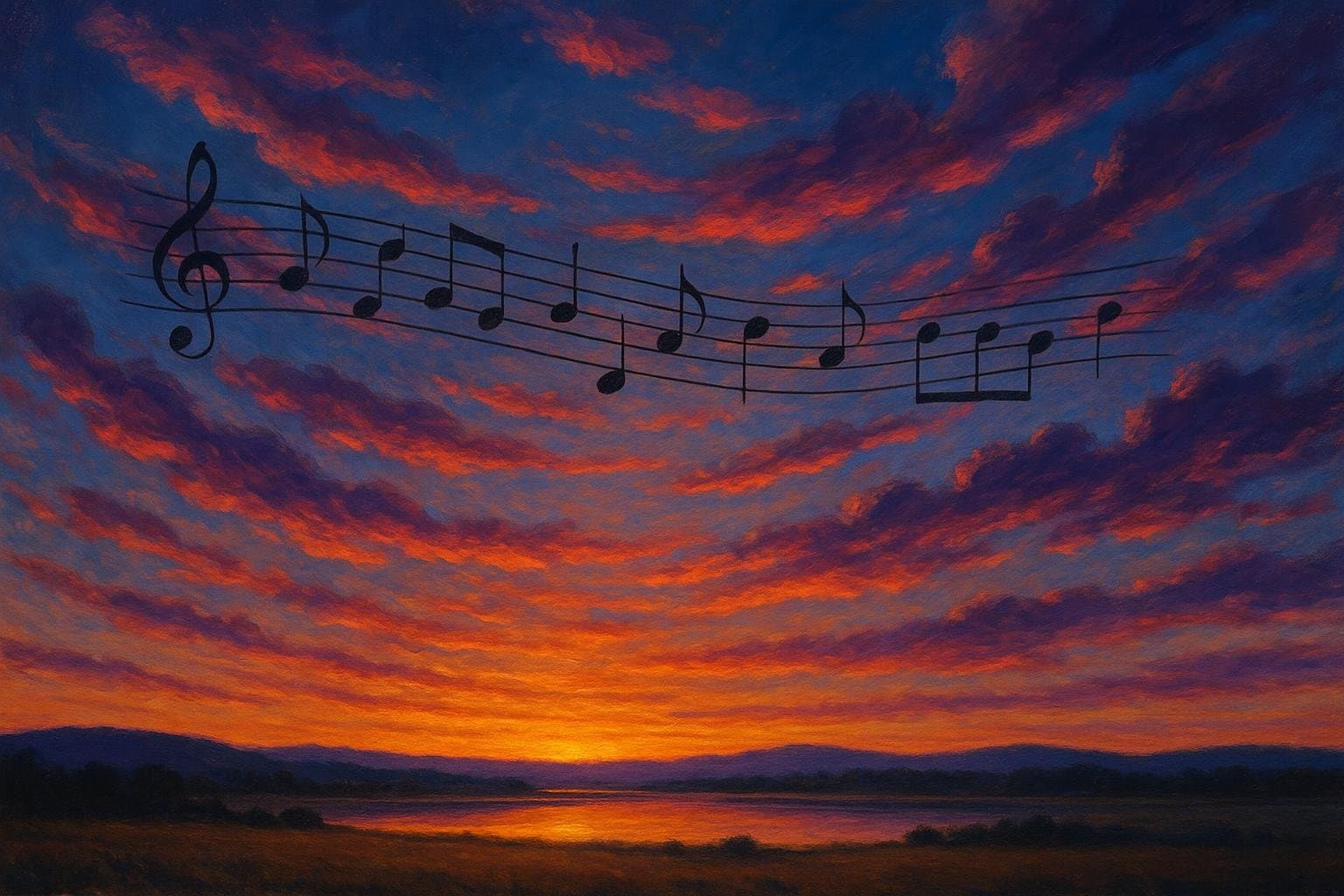The Sunset’s Symphony: Debussy’s Musical Vision of Nature

Nothing is more musical than a sunset. — Claude Debussy
Debussy’s Synesthesia: Hearing Color in the Evening Sky
Claude Debussy’s claim, ‘Nothing is more musical than a sunset,’ invites us to perceive the natural world through a sensory blend—hearing music where there is only color and light. Debussy, renowned for his impressionist compositions, often wrote of ‘correspondences’ between sound and sight, suggesting that the fading hues of twilight evoke harmonies as intricate as those in any nocturne or symphony.
Nature as Orchestra: The Artistry of Everyday Phenomena
Transitioning from sensory interplay, Debussy’s metaphor highlights how nature orchestrates its own performance at day’s end. The shifting light and emerging shadows act as notes in a gentle rhapsody, paralleling concepts in Beethoven’s ‘Pastoral’ Symphony (1808), where landscape and weather become narrative forms. In this way, a sunset transcends mere visual pleasure and achieves a musical, almost orchestrated, beauty.
Impressionism and the Musical Landscape
Debussy’s perspective aligns with the impressionist movement in both music and art, wherein fleeting impressions and atmospheric effects are valued over rigid structure. Just as Monet’s series of sunset paintings captured transient moods, Debussy’s compositions—like ‘Clair de Lune’—seek to emulate the ephemeral harmonies found in dusk, reinforcing that music, like light, can dissolve boundaries and stir emotion.
Emotional Resonance: Sunsets as Universal Melodies
Expanding upon the emotional dimension, sunsets universally inspire awe and reflection, much as a poignant melody can move an audience. Human beings across cultures mark the day’s end with music and ritual, reinforcing the deep connection between nature’s cycles and our inner rhythms. Sunsets, as Debussy suggests, play a silent but deeply felt music within each observer’s heart.
Creativity Inspired by the Setting Sun
Finally, Debussy’s poetic comparison encourages artists in all media to look beyond traditional inspiration. Many composers, writers, and painters—such as Turner or Chopin—have drawn creative energy from the spectacle of twilight. The sunset’s ‘music’ reminds us that the greatest works often arise from the union of different senses, encouraging us all to find symphonies in the simple marvels of the natural world.